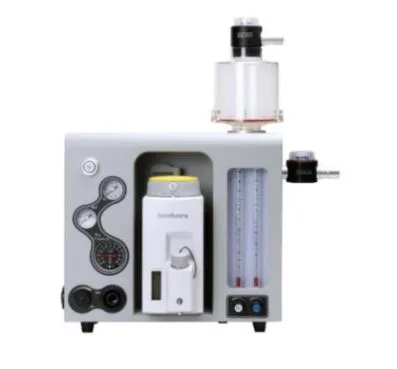The Best Lightroom Alternatives for Photographers in 2026
Lightroom has long been a staple in the digital photography world. It is a go-to for professionals who need both organizational control and creative precision. Yet, as technology evolves, so do the tools available to photographers. Many creators are now seeking alternatives to Lightroom because they desire more flexibility, automation, or a distinct post-processing approach. In this guide, we will explore some of the most trusted and innovative alternatives to Lightroom available today.
1. Luminar Neo
The AI photo editor Luminar Neo is among the best photo editing software for photographers of all skill levels. It supports Windows and macOS. You can also integrate it into your existing Lightroom workflow as a plugin. A lifetime (perpetual) desktop license starts at about $119 for Windows/macOS usage.
| Pros | Cons |
| AI tools speed up complex tasks such as portrait refinement and creative enhancements. | Occasional performance drops may occur when working with very large RAW files. |
| Offers numerous creative effects that help build a distinctive style quickly. | Fewer surgical controls: ultra-precise masking, pixel-level compositing, and scientific color pipelines are limited. |
| Regular feature updates expand capabilities without requiring prior technical experience. | Plugin ecosystem is smaller than Adobe’s. |
2. Zoner Photo Studio X
Zoner Photo Studio X is a practical option for photographers seeking professional photo editing software with a straightforward learning curve. The official subscription price is $59/year, and it is available exclusively for Windows users.
| Pros | Cons |
| Built-in cataloging tools make managing large photo collections straightforward. | Not available for macOS, which limits accessibility for many photographers. |
| An all-in-one workspace reduces the need for multiple apps. | Lacks the advanced AI tools found in more modern editors. |
| Affordable annual pricing makes it appealing for budget-conscious creators. | The interface may feel crowded to users who prefer a more minimalist layout. |
3. ACDSee Photo Studio Ultimate
What is the best photo editing software? There is no right or wrong answer, but if you seek a versatile option with advanced editing tools and strong organizational capabilities, ACDSee may be a good fit for you. It supports Windows and provides multiple purchasing models: the Ultimate perpetual license is $119.99, while the Home Plan subscription is $89/year.
| Pros | Cons |
| Layer-based editing lets users build more complex visual adjustments. | The interface can feel overwhelming to beginners. |
| Fast image browsing speeds help manage large collections efficiently. | macOS support is limited to other ACDSee products, not the Ultimate version. |
| Reliable face detection assists in organizing portrait-heavy libraries. | Some tools feel less refined compared to higher-end competitors. |
4. Corel PaintShop Pro
What do photographers use to edit photos? Both professionals and newcomers prefer programs that include photo adjustments, retouching tools, and creative design features, without requiring them to switch between apps. Corel PaintShop Pro may be perfect to satisfy these needs. The current version is priced at $79.99 for the standard edition and $99.99 for the PaintShop Pro Ultimate package. It is available exclusively for Windows.
| Pros | Cons |
| An affordable one-time price works well for photographers who avoid subscriptions. | Not available for macOS, limiting cross-platform workflows. |
| Built-in templates and creative tools help users produce graphics alongside photos. | Slower RAW performance compared to higher-end competitors. |
| Useful learning materials make it beginner-friendly. | The interface may feel dated to photographers used to modern app designs. |
5. Polarr
Polarr Photo Editor is a lightweight and modern option for photographers seeking a streamlined workflow across multiple devices. Its clean interface makes it easy to experiment with color, style, and mood without needing advanced technical skills. Its subscription costs $7.99/month or $47.99/year. It supports Windows, macOS, Android, and iOS.
| Pros | Cons |
| Cross-platform availability ensures smooth switching between desktop and mobile devices. | Limited depth for photographers who need advanced RAW control. |
| A wide range of filters helps users define a consistent look quickly. | No built-in photo management tools for large collections. |
| Mobile-first design makes it ideal for on-the-go creators. | More advanced creative control requires other software. |
6. PhotoScape X
PhotoScape X features quick adjustments, batch functions, and creative filters in a clean, intuitive layout. The base version is free, while the Pro upgrade costs $39.99. It is available on both Windows and macOS.
| Pros | Cons |
| A user-friendly interface helps beginners learn editing quickly. | Lacks the depth required for advanced RAW workflows. |
| The free version offers plenty of essential tools for casual use. | Limited layer-based capabilities restrict more complex editing. |
| The affordable Pro version adds useful creative features. | Not ideal for professionals handling large photo libraries. |
Conclusion
Choosing the right photo editor depends on your workflow, the tools you value, and the results you want to achieve. Each tool speaks to a specific need — mobility, affordability, creative control, simplicity, or advanced file handling. By understanding what matters most to you, you can enhance your images and develop as a photographer. Test a few options, explore their trial versions, and pick the one that helps you express your ideas clearly and efficiently.




